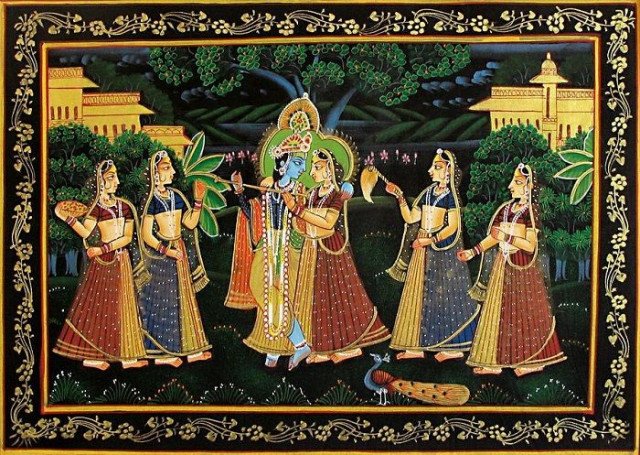Seasons in India
A Season is a period of the year that is characterized by special climatic conditions.
According to traditional Indian culture the Indian subcontinent divides into six seasons, with the approximate duration of each being two months. These are as follows Spring Season (Vasant Ritu), Summer Season (Grishma Ritu), Monsoon Season (Varsha Ritu), Autumn Season (Sgarad Ritu), Rainy Season (Varsha Ritu), Pre-Winter (Hemant Ritu), Winter Season (Shishir Ritu). India has a monsoon type of climate. The term “monsoon” is derived from Arabic word ‘mausim’ which means seasonal reversal in the wind direction. The season of India influenced by the two types of winds – one blow from the Arabian Sea and other one is from the Bay of Bengal.
However, according to the India Meteorological Department (IMD), there are four seasons in India like other parts of the world. Various climatic factors are responsible for the seasonal changes in India.1. Summer Season
This season begins from March to the middle of June. As per the Hindu calendar, this season mainly occurs in Jyeshta and Aashaadha. In this season, the weather is very hot in most of the parts of India. The whole India experiences increase in temperature because of the summer solstice. During this season, hot violent winds blow during daytime in the north and north-west India which is called ‘loo’. When the hot and dry land breeze meets the humid sea breezes during this season, violent cyclone originates in that area. This cyclone is known as the pre-monsoon cyclone. This is very violent winds that brought heavy rainfall and hailstorms. This cyclone has some local name given below-
1. Nor Wester - Eastern India (West Bengal, Bihar, Jharkhand, Odisha). It is useful for cultivation of Rice and tea.
2.Cherry Blossom – Karnataka and Kerala (it is useful for blooming of coffee flowers.)
3. Mango Shower – South India ( It is useful for early ripening of mangoes.)
4. Kalbaishakhi- West Bengal ( Nor Wester is called Kalbaishakhi in Bengali language.)
5. Bardoli Chheerha- Assam ( Nor Wester is called Bordochila in Assamese language.)Due to the scorching sun and high temperature, the water level of ponds, rivers goes down and people including animals, birds, etc., feel uncomfortable and tends to stay inside as much as they could.
The average temperature in this season remains around 38 degree centigrade (38 degree Celsius).
2. Winter Season
Winter season in India begins from mid-November in northern India and stays till the month of February. As per the Hindu calendar, this season occurs in the months of Magha and Phalguna. The average temperature on the eastern coast is between 24° - 25° Celsius, while in the northern plains, it ranges between 10° - 15° Celsius. In this season, Days are warm and nights are cold. This season lies between pre winter and spring season. This season is distinguished by dryness, cold winds, occasional rainfall and snowfall.
Frost is common in the north and the higher slopes of the Himalayas experience snowfallAs the Sun’s vertical rays move south of the equator, most of the country experiences moderately cool weather and the temperatures changes by about 0.6°C (1.08°F) per degree of latitude. December and January are the coldest months having mean temperatures of 10 – 15°C (50 – 59°F) in Indian Himalayas. It is the coldest season of the year with an average temperature of around 20 degree centigrade. In some regions temperature falls below 0 degree centigrade.
Snowfall is also very common in most of the hill stations of India in this season. The major Hindu festivals celebrated in winter season are Pongal, Shivratri, Lohri, and Pongal.
The weather is normally marked by clear sky, low temperatures and low humidity and variable winds. The rest of North India, including the Indo-Gangetic Plain, almost never receives snow. However, ,temperature in the plains occasionally fall below freezing, though never for more one or two days. Winter highs in Delhi range from 16°C (61°F) to 21°C (70°F).
3. Rainy Season
It includes the months of July and August. As per the Hindu calendar, this season comes in the months of Shravana and Bhadrapada (Sawan and Bhado). The southwest monsoon arrives in two branches – the Bay of Bengal branch and the Arabian Sea branch. The latter extends toward a low- pressure area over the Thar Desert and is roughly three times stronger than the Bay of Bengal branch.
During Rainy season, earth is carpeted with greenery all over, level of water rises in the rivers, ponds and canals . The sky is filled with black clouds before it rains and rainbow can be seen in the sky after the rain stops. The important Hindu festivals that are celebrated in this season are Onam, Krishna Janmashtami, and Raksha Bandhan.
Monsoon rains impact the health of the Indian economy as Indian agriculture employs 600 million people and composes 20% of the national GDP. Good monsoons correlate with a booming economy. Weak or failed monsoons (droughts) result in widespread agricultural losses and substantially hinder overall economic growth.
During this season, the low-pressure condition over the northern plains intensifies which attracts the trade winds of the southern hemisphere. These south-east trade winds originate over the warm sub-tropical areas of the southern oceans. They cross the equator and blow in a south-westerly direction entering the Indian peninsula as the south-west monsoon.
4. Autumn Season
This season begins after rainy season from October to the middle of December. It is often called as the retreating season of monsoon which happened due to the gradual retreat of south-west monsoon. As per the Hindu calendar, this season comes in Ashwin and Kartik months. The hot and humid weather starts disappearing and leaves start falling off the trees in this season, so it is also known as the fall season.
.png)














.jpg)








 a quick overview on Nobel Prizes
a quick overview on Nobel Prizes  List of Nicknames of Indian Cities
List of Nicknames of Indian Cities